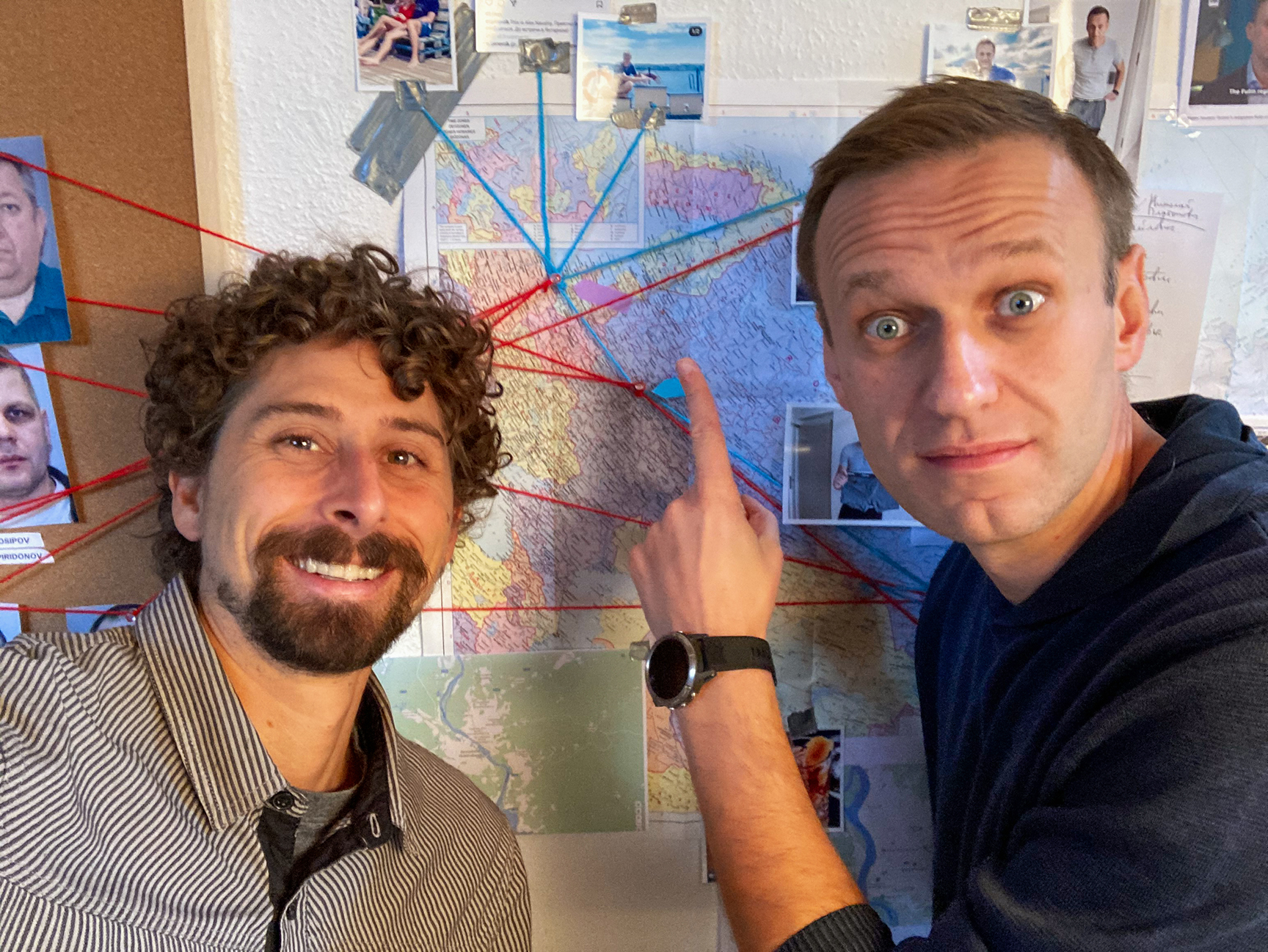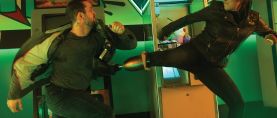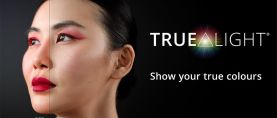Capturing Navalny
Director Daniel Roher and cinematographer Niki Waltl, AAC discuss shooting this intriguing — and disturbing — documentary about the imprisoned Russian political activist.
All images courtesy of Niki Waltl, AAC
Alexei Navalny, Russian President Vladimir Putin’s most prominent political opponent, is staring right into the lens of the camera as an offscreen voice asks him, “If you were killed, what memories would you leave to the Russian people?”
The question is as brutal, in its own way, as the treatment Navalny has received from Putin, who feels so threatened by Navalny that he never even uses his name in public, referring to him as “that person.” In August 2020, just months before filmmaker Daniel Roher began to shoot the CNN Films/HBO Max documentary Navalny, Putin’s security services allegedly poisoned the famed political-activist attorney with the nerve agent Novichok. His life was only just saved by doctors in Germany after an emergency evacuation flight from Russia to Berlin. In January 2021, Navalny was — incredibly — planning to return to Moscow to confront Putin again. “It does sound almost insane for him to go back, but being a Russian politician who wants to bring change to his country, it was always clear for him that he would return,” says cinematographer Niki Waltl, AAC.
Roher and Waltl shot most of the documentary in Germany’s Black Forest, where Navalny was recuperating from the poisoning while planning his next move amid the struggle for political power in the world’s largest country. “We were after the tropes of a thriller — that was very important,” said Waltl. The initial question directed at Navalny frames the entire film, which sets out to tell the story of how his fate is inextricably linked with that of the Russian people.
Much of the footage was shot handheld as Navalny worked with his family and some colleagues in a makeshift office, trying to find out who actually poisoned him. Says Waltl, “I used a longer lens — 40mm to 85mm, nothing wider — and stayed in close-up on the subject, shooting from further away but with a tighter composition, like you would in spy movies, with less space to breathe to keep the tension going.”
“We would shoot whatever we could get — things were changing, and the investigation into the poisoning was unfolding in front of us.”
— cinematographer Niki Waltl, AAC
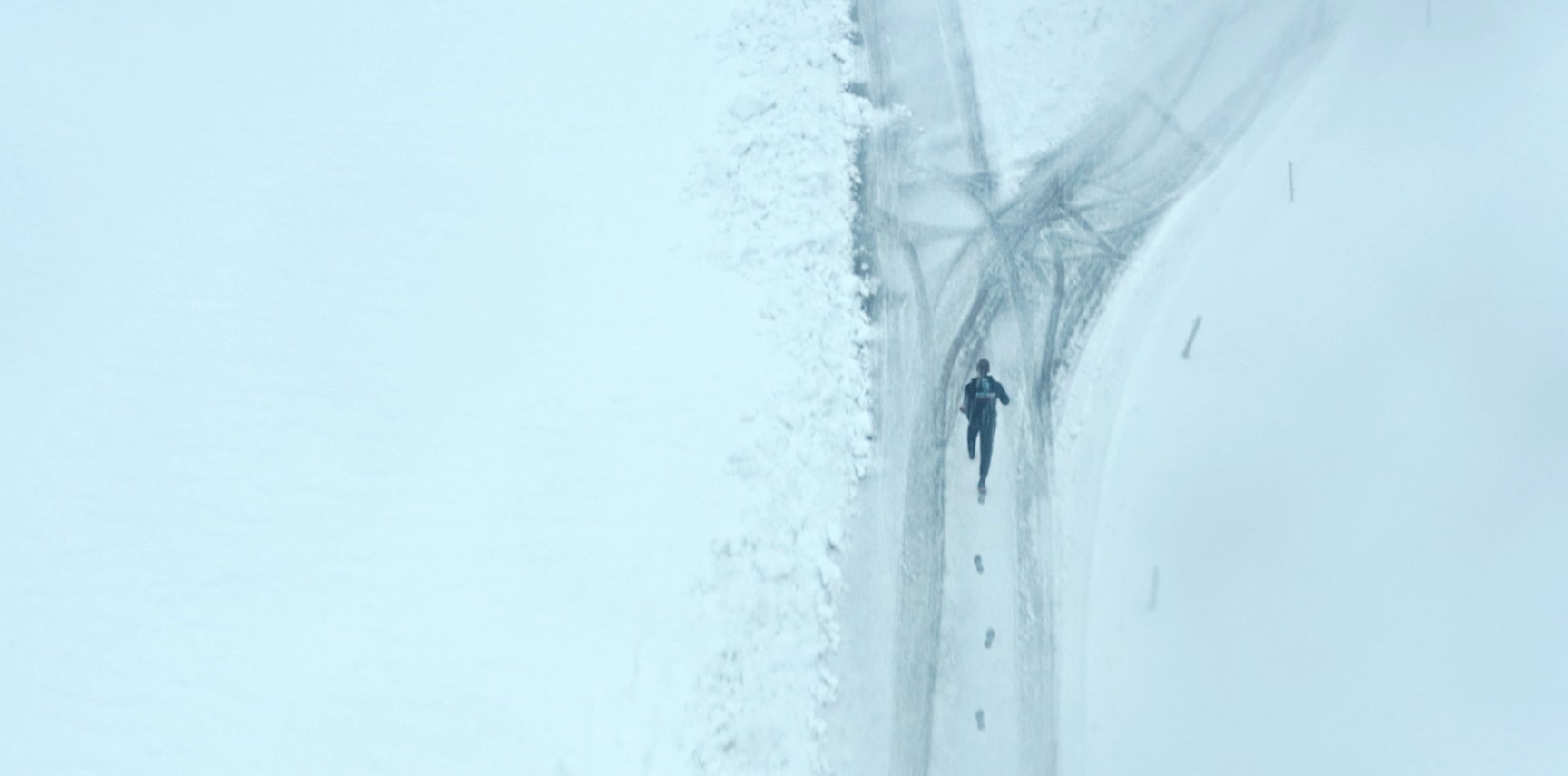
One scene shot from above with a drone shows Navalny running through the snowy forest, leaving a trail of footprints behind him — almost an echo of a similar scene in the latest James Bond film, No Time to Die, yet photographed almost a year before that film’s release. “The shot happened quite naturally,” Waltl remembers. “It was the middle of winter and we were situated in Freiburg in the Black Forest, surrounded by these snowy hills and landscapes. So one morning we just took Alexei out there to get shots of him running in that scenery. It seemed like a good visual metaphor of him gaining strength again after the poisoning.
“We would shoot whatever we could get — things were changing, and the investigation into the poisoning was unfolding in front of us.”

Waltl notes that his guiding idea was to employ shallow depth of field by maintaining a low f-stop “and keeping the shutter open — maybe not everything would be in focus, but it would give the footage a cinematic feel. My goal on every project is to give it a cinematic feeling, to move away from a ‘television look.’ Shooting with open apertures is a technique that helps accomplish that, and it was something Daniel and I agreed to on the first day of shooting. Our go-to stop was f/2.0, so we did risk having some moments out of focus, since we couldn’t bring a focus puller for our vérité shooting. It was very important not to be intrusive, and operate with a minimal crew, but a doc is more forgiving when it comes to focus, and it worked out quite well. I’m relieved to say that the editors didn’t complain!”
The film builds to a climax when Navalny, aided by skillful Bulgarian investigative journalist Christo Grozev, is given the phone numbers of the five men who were allegedly sent to kill him. Navalny calls them individually, pretending to be an official Russian investigator, and one of them — allegedly a member of the Russian security services — tells him all the details of the attempted assassination by poison.
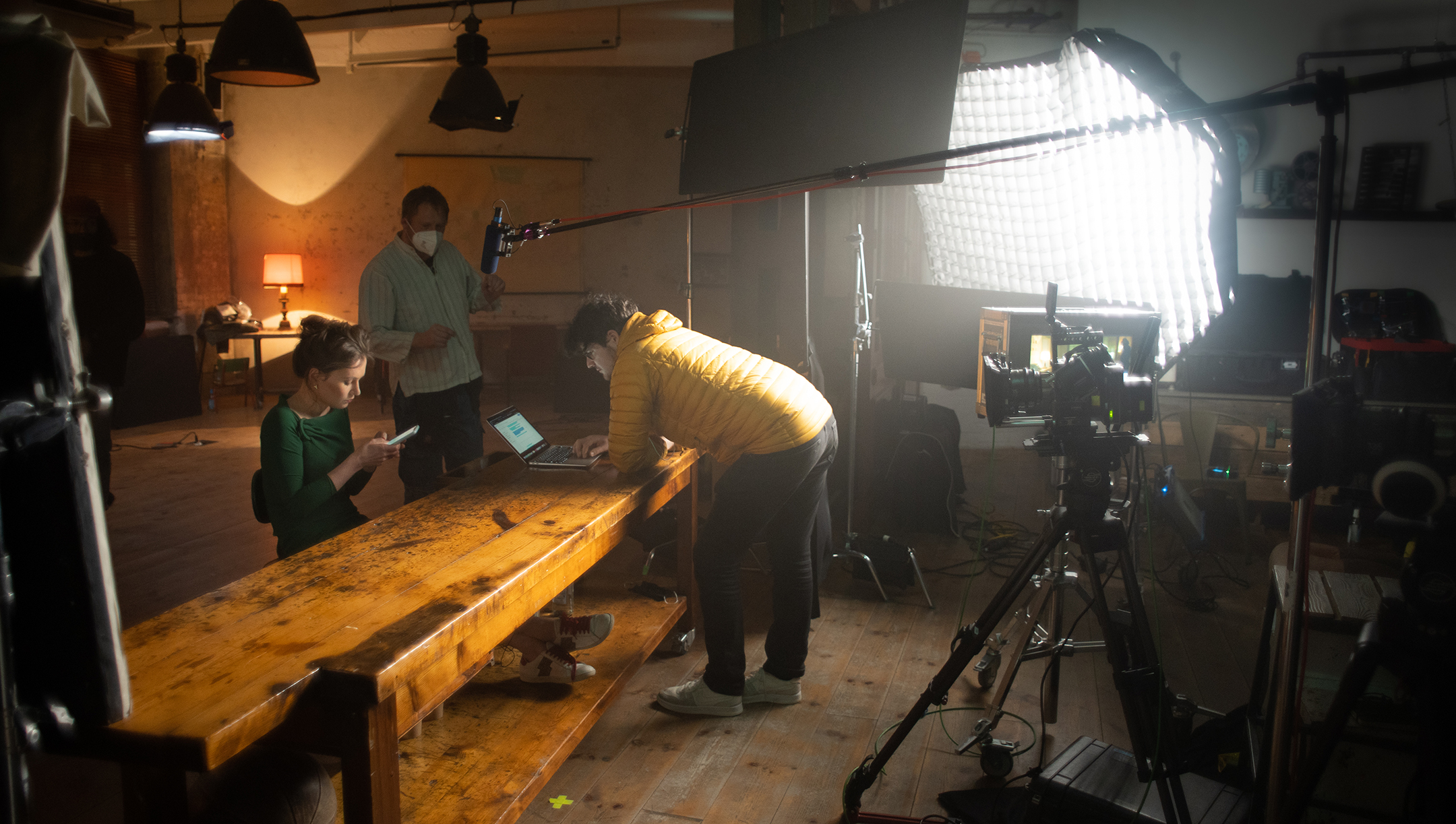
Waltl recalls, “Because of the time zones, and because Navalny wanted to do the phone calls in the morning, we started at 3:30 a.m. German time. We had cameras rolling, with Daniel and I shooting handheld.” The lighting in the room was bad, so they employed a simple lighting setup using a small source attached to a boom arm and fitted with a Chimera, so the resulting soft directional light would gently model their subject. “I don’t speak a word of Russian, but I could tell from the expressions on their faces that I was shooting one of the most important sequences of my life, and I was hoping the battery wouldn’t die!” As the agent blurted out all of the incriminating details to the supposed “investigator,” Navalny and his team were high-fiving each other, scarcely believing their luck.
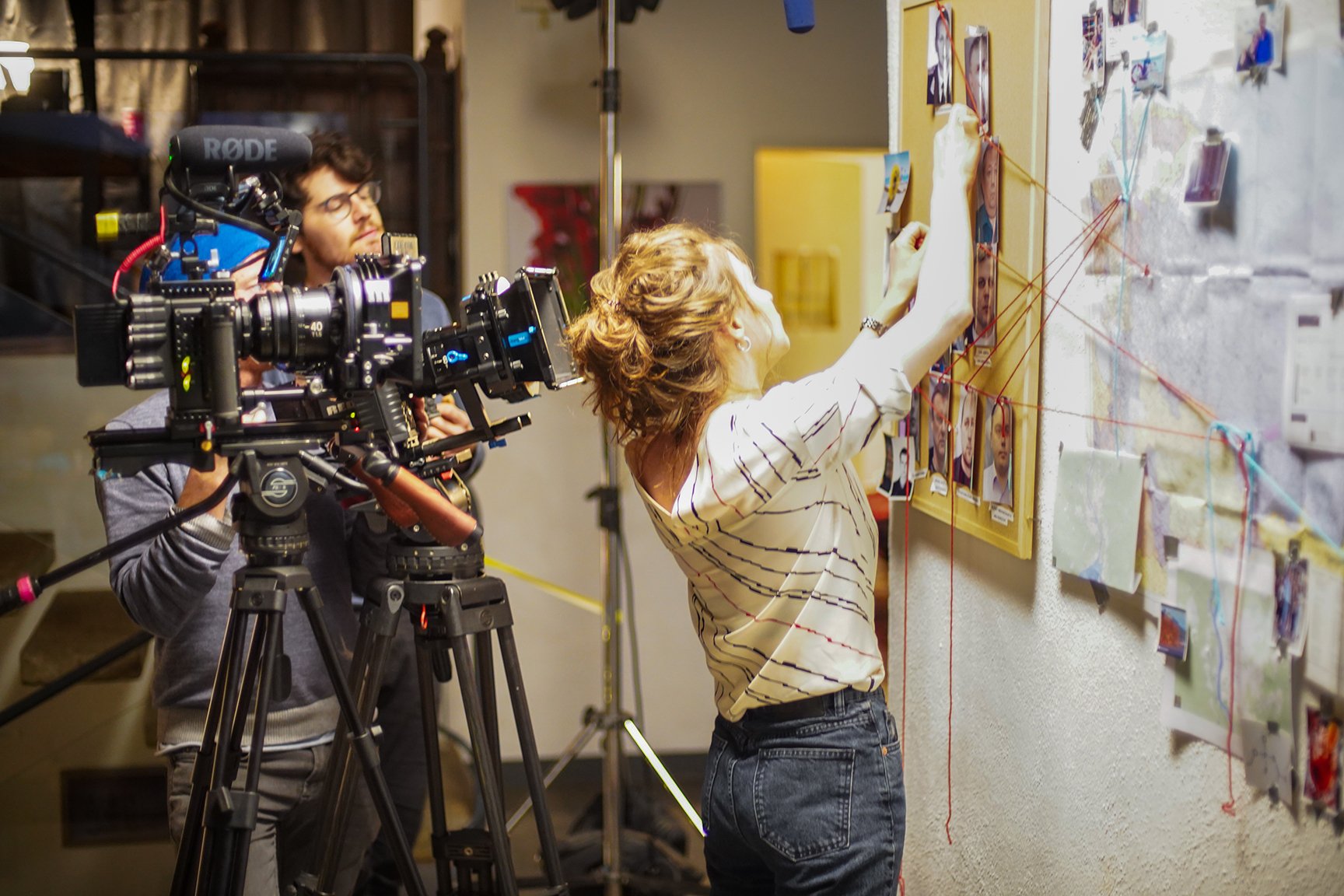
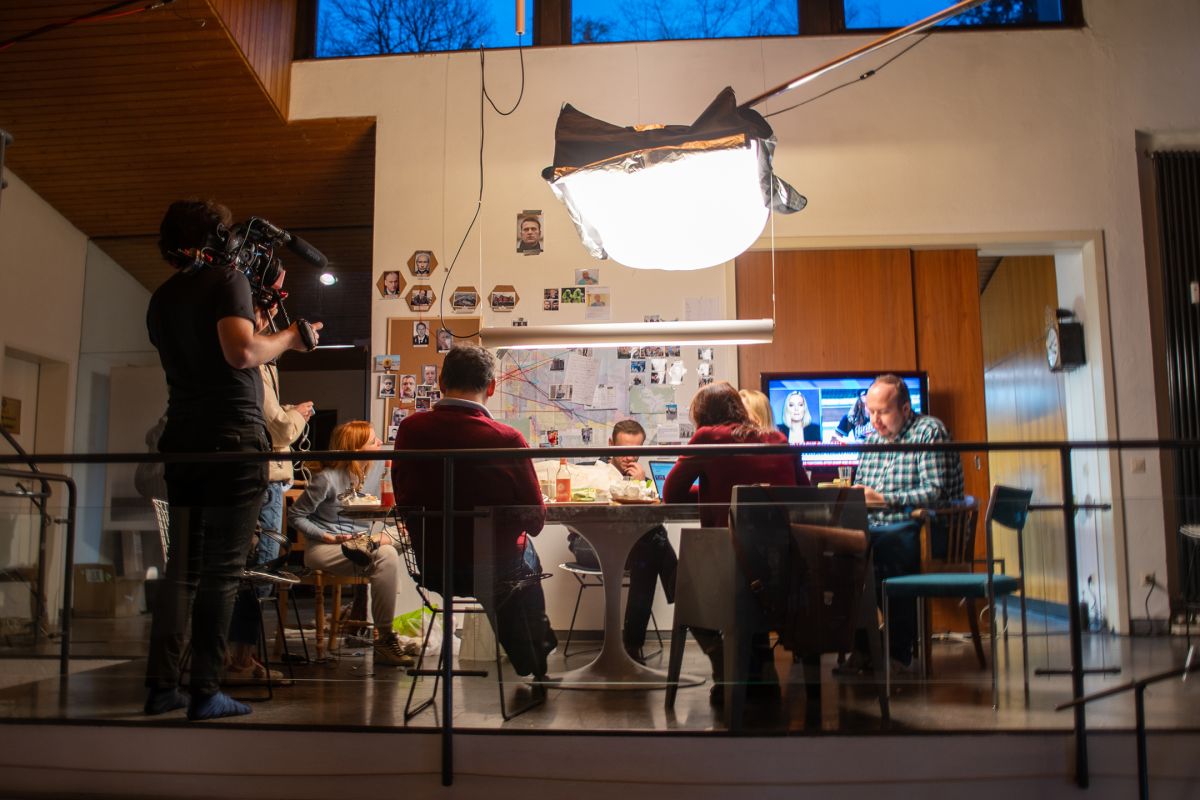
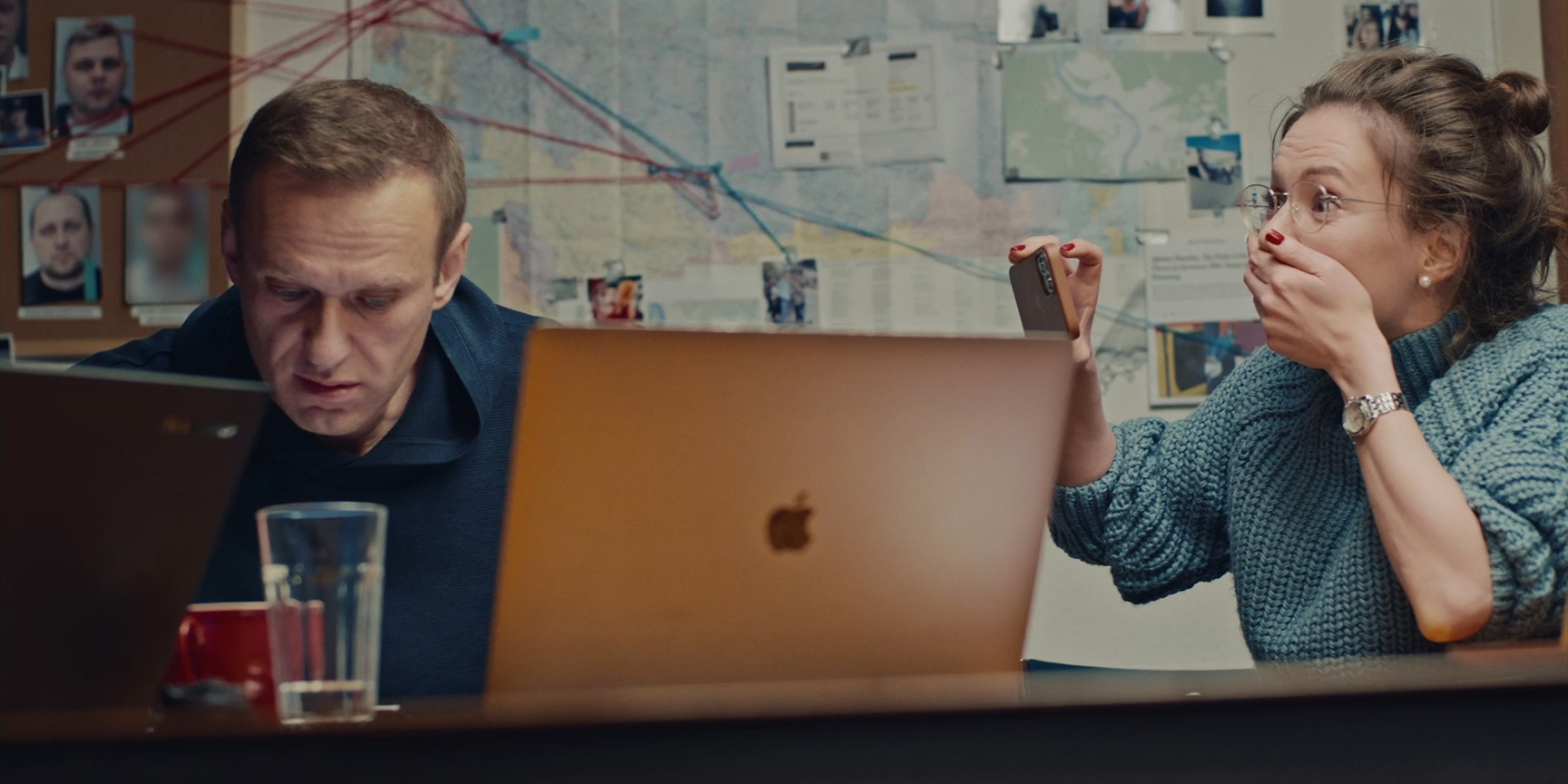
In the wake of the phone call, Navalny publicly accused Putin of sending agents to poison him. As the filmmakers knew he would, Putin gave a press conference in Moscow denying this and blaming everything on the CIA. Then came the hammer: Navalny posted the video of his phone conversation duping the agent on YouTube. Within hours, it had been viewed more than 5 million times.
While the recording of the telephone conversation was the dramatic scoop of the project, the most memorable scenes come from the sit-down interview with Navalny. The filmmakers asked one of his staffers, Maria Pevchikh, where he was most happy, and she said that after work Navalny liked to go out to a bar for a drink. So, Waltl meticulously set up and shot the key interview in a deserted bar, positioning Navalny on a stool and setting up the primary camera to cover him from the service side of the counter. “With the interview, we had a very specific look we were after — darker, noirish and suspenseful, but with the feeling of a certain intimacy,” the cinematographer says. “I wanted him sitting down so we could see his hands. We also decided to have him looking straight down the lens barrel, so he looked like a president, but, at the same time, like a guy in the bar, with the viewer as the bartender to whom he is talking.”
“Looking straight into the camera? I lost a lot of sleep over that. You can’t do that, ever!”
— director Daniel Roher
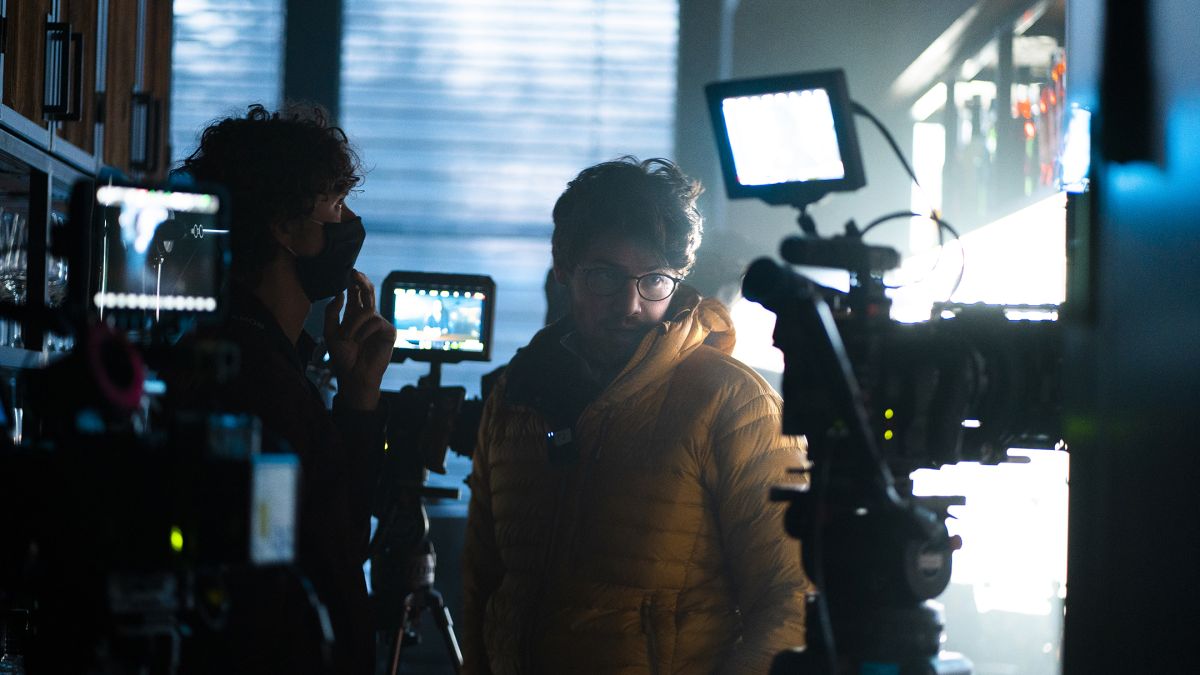
Roher admits that this strategy made him apprehensive. “Looking straight into the camera? I lost a lot of sleep over that. You can’t do that, ever!” he says, alluding to the time-tested conventions of narrative production. “But it turned out to be extremely effective.”
The shooting technique adopted by the filmmakers was pioneered by Academy Award-winning documentarian Errol Morris, who famously uses a device known as the “Interrotron,” which employs a teleprompter-like screen in front of the taking lens to allow his subject to look directly into the optic yet see the interviewer’s face, as captured by a secondary camera. (See Shot Craft in AC Nov. ’21.)
“The method creates an engaging sensibility,” Waltl says. “We knew it would probably be the last interview Navalny would give for at least a decade.
“We decided to shoot down the barrel just a day before the interview, so we quickly built this system DIY-style. And although it’s an effective technique, technically it’s nothing too fancy — just a teleprompter with an iPad rigged to the A-camera with Magic Arms. Daniel is sitting in the room next door, in the kitchen of the bar, and he and Alexei are on a Skype call via that iPad.”

Waltl relied on a mix of Red Digital Cinema cameras for the production, equipped with Sigma Cine Primes. “Most of the shoot, especially the vérité parts, was done on a Gemini since I own one and brought it to the project,” he explains. “For the interviews, we decided to have more cameras and angles, typically three total. For the key scene — Alexei’s interview — we even had four cameras. Having started the project with Red, we wanted to stay in that look and environment. The main camera for the interviews was usually a Red Monstro [for shoots with Navalny, wife Yulia Navalnaya, and Grozey] or a Helium [for Pevchikh and Progress Party leader Leonid Volkov], and then we had extra Gemini units as third and fourth cams.”

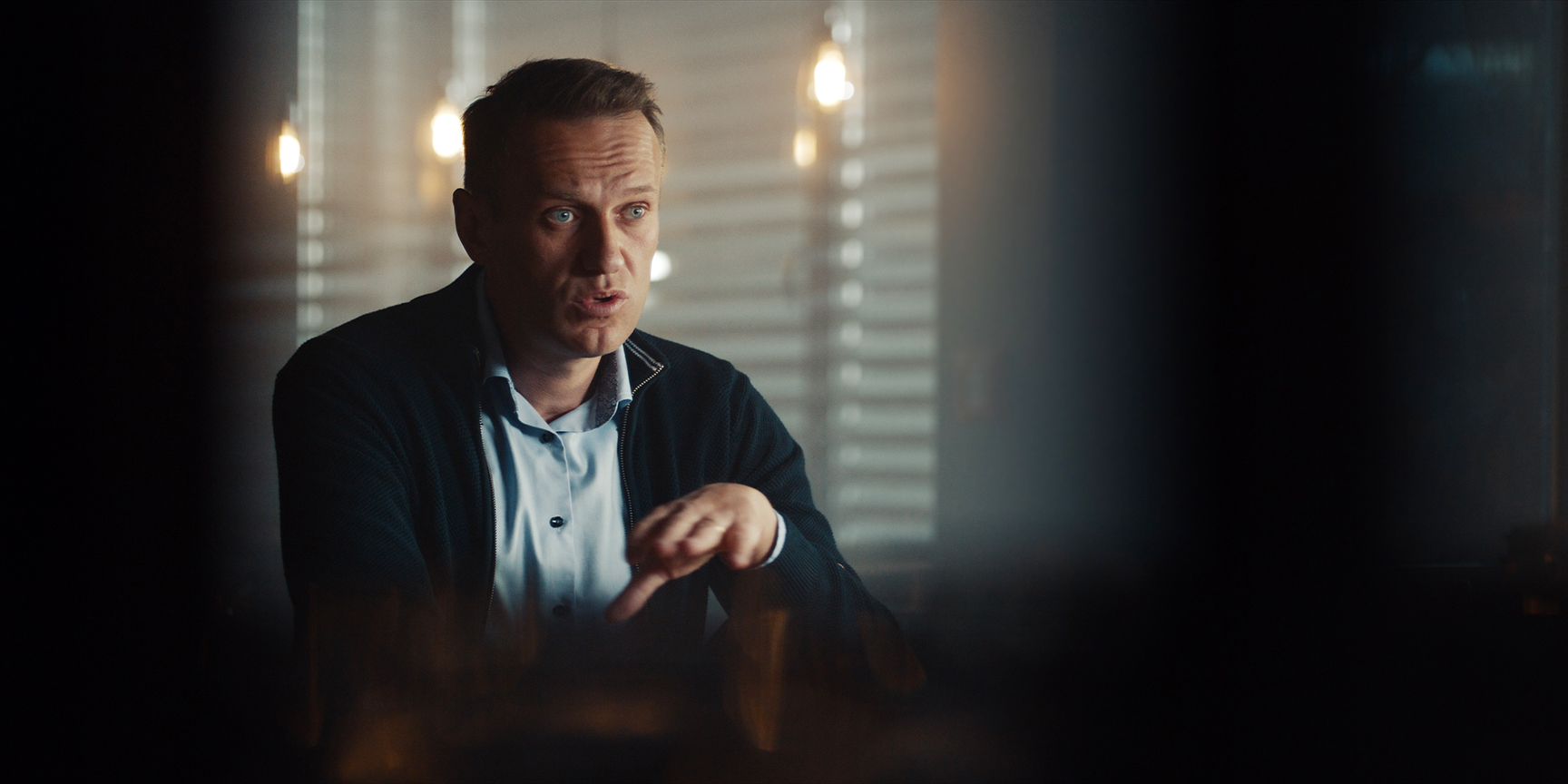

To light the bar, Waltl says, “it was interesting for us to take away light, making it suspenseful and darkish by using negative space. We had an Arri SkyPanel with an Octadome on camera left, practicals hung from the bar ceiling and standing in the background to add depth. The fill was just a bounce — a 1x1-meter muslin bouncing the Arri light.”
For the barroom interview, “We had a set of questions for the daytime setup, and for the nighttime setup we had different questions — about the investigation and the poisoning, the darker side. For those sequences we put some haze into the room — we found a hazer used for events. At nighttime, we had HMIs outside the bar, shining in through the blinds as the art director, Rafael Loß, and gaffer, Paul Näther, waved flags to circulate the haze through the room.”
The interview was shot from Jan. 11-13, 2021, and on Jan. 17 Navalny flew back to Moscow. He was arrested at the airport on arrival, taken to court, and sentenced to 2½ years in jail. He subsequently received an additional nine-year sentence on another charge.
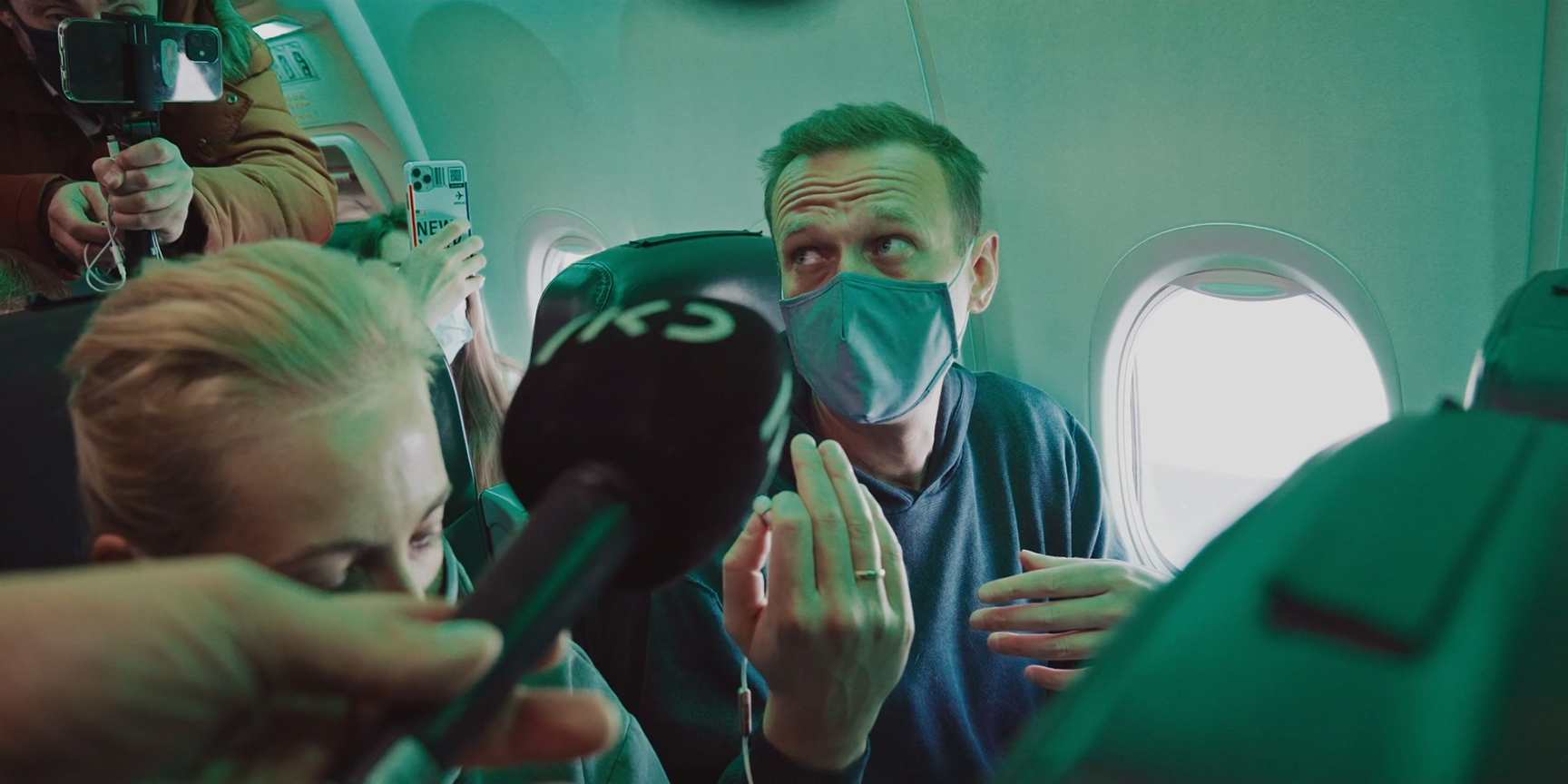
“The man has a superhuman fearlessness,” says Roher, who compares Navalny to Alex Honnold, the mountain climber who scaled the granite face of El Capitan with no safety lines in the documentary Free Solo.“Whatever that self-preservation gene is that others have, he doesn’t have it — he is made of steel.” In addition to his courage, Navalny has a sense of gallows humor. At one point, referring to Roher’s film crew, he said to an aide, “I realize he is filming it all for the movie he’s going to release if I get whacked!”
Waltl says he was a bit intimidated the first time he met Navalny, but that “he is very disarming, and also used to having cameras around. He is very easygoing, makes you feel welcome, and very quickly forgot about the camera.”
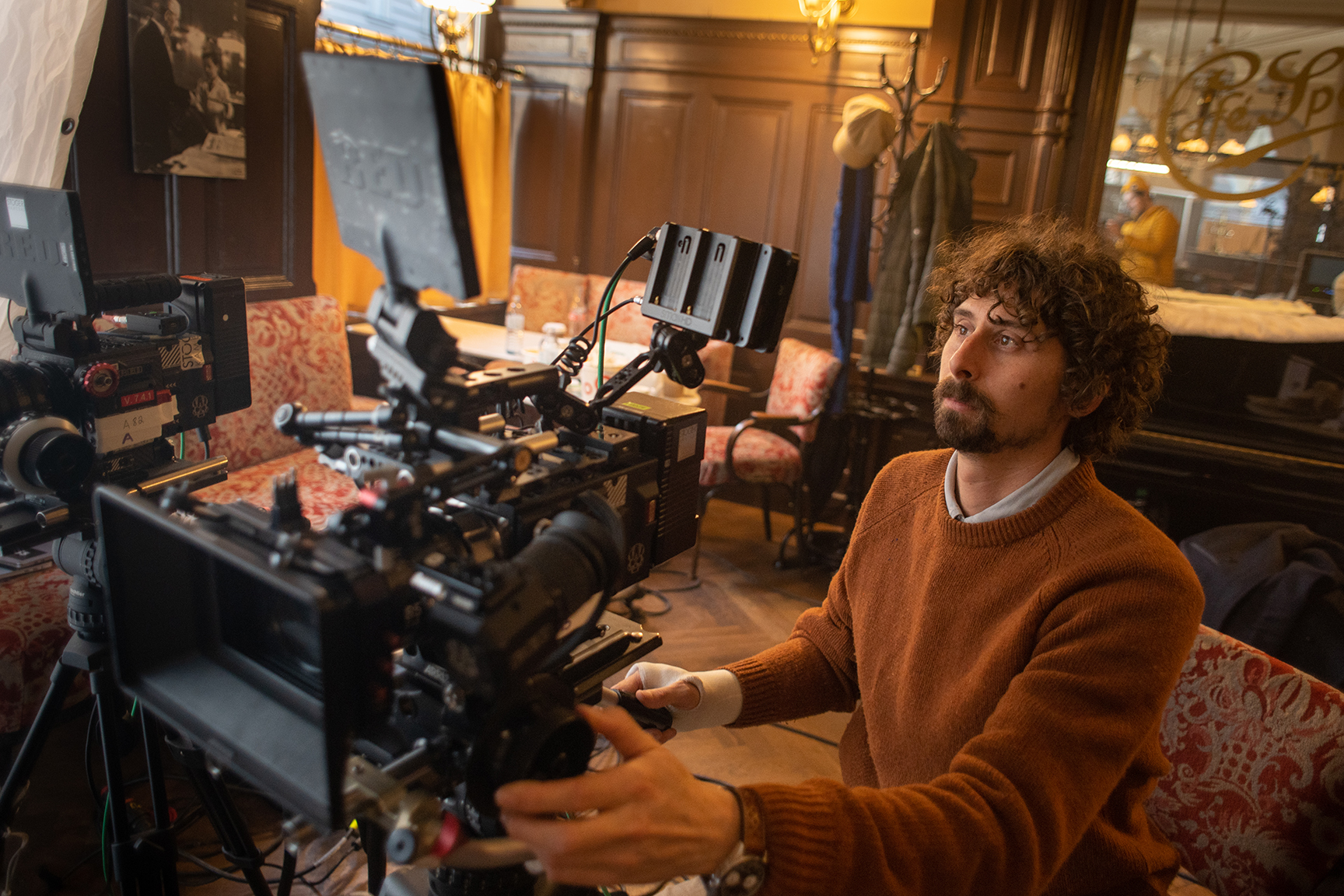
Based in Tirol, Austria, Waltl, studied cinematography in Barcelona and has worked as a cinematographer for 10 years. “I always had a video camera; I always wanted to be a tool to tell a great story. I like to build scenes, give the editor something to work with, block a scene. I like to keep the film cinematic, for example, by shooting with open apertures.” He concedes that he and Roher “fought a lot” on Navalny, but “in a good way.” The two “had lots of heated discussions,” notably over how to shoot the main interview.
At the end of the onscreen interview with Navalny, Roher asks the dissident — who spoke to them in English for most of the film — to send a message in Russian to the Russian people. “Don’t give up,” Navalny says, gazing straight into the camera. “If they decide to kill me, it means we are incredibly strong. We need to utilize this power. We don’t realize how incredibly strong we actually are.”
Editor’s Note: It was reported on Feb. 16, 2024 that Navalny died in a Russian prison.
